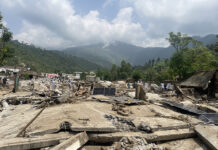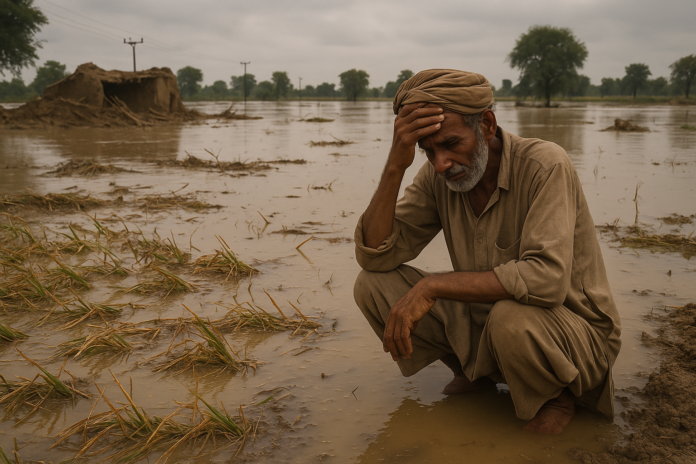Following the recent floods that devastated rural areas of Punjab, farmers’ organizations have called on the government to act swiftly in mitigating the damage and securing the livelihoods of affected farmers. They are demanding the launch of a comprehensive revival package, in addition to ongoing rescue efforts, to help restore the agricultural economy of the region.
Farmer leaders said that the proposed revival package should include financial aid, high-quality seeds, and essential agricultural inputs like fertilizers and pesticides. Akhtar Farooq Meo of Kissan Board Pakistan stated that farmers incurred losses amounting to Rs536 billion due to damage to cotton, rice, sesame, maize, and fodder crops. He also warned that many towns are facing shortages of perishable goods, which could lead to a potential food crisis.
Khalid Hussain Bath, President of Kissan Ittehad Pakistan (KIP), said that nearly 2.5 million acres of cultivated land had been destroyed, including essential crops like rice, cotton, and millet.
He emphasized the severity of the damage, noting that thousands of villages across Punjab were devastated. Bath also criticised the Punjab government’s failure to purchase wheat from farmers in recent years, leaving them with little to no financial support.
Dr. Zafar Hayat, President of the Farmer Bureau of Pakistan (FBP), expressed the need for immediate action to ensure farmers can prepare for the next crop season without undue financial strain. He highlighted the significant stress already placed on farmers due to the government’s failure to announce a wheat support price or purchase grain earlier this year.
According to the initial estimates published by brokerage house Arif Habib Limited (AHL), the economic cost of the 2025 floods is estimated at around Rs409 billion ($1.4 billion), equivalent to 0.33% of Pakistan’s GDP. Agriculture has suffered the most, with losses exceeding Rs302 billion ($1.0 billion), accounting for nearly three-fourths of the total impact and 0.24% of GDP.
Millions of acres of farmland have been submerged, with Punjab bearing the heaviest losses. Approximately 1.3 million acres of rice, sugarcane, cotton, and maize were flooded along Ravi, Chenab, and Sutlej rivers. Sindh reported nearly 80% of Bahawalnagar’s cotton crop destroyed, while Khyber Pakhtunkhwa saw around 3,200 acres affected in districts including Buner, Battagram, and Swat.
Early assessments suggest agricultural output in affected areas may fall by 15–20%, potentially reducing GDP by 0.5–1.0%. Secondary effects such as soil salinity, irrigation disruptions, and supply chain breakdowns could further raise food inflation by 20–30% and increase import needs for essential commodities by 10–15%.
Crop-specific losses under a 10% damage scenario include sugarcane at 8.0 million tons, cotton at 0.88 million bales, and rice at up to 0.92 million tons. Maize losses are estimated at Rs55.1 billion ($188 million). Livestock losses, though smaller in aggregate, affect rural livelihoods and food security.























